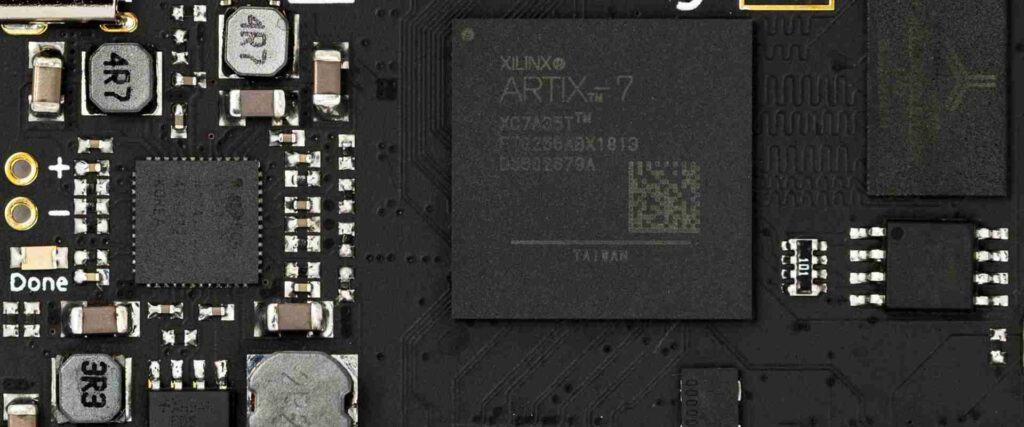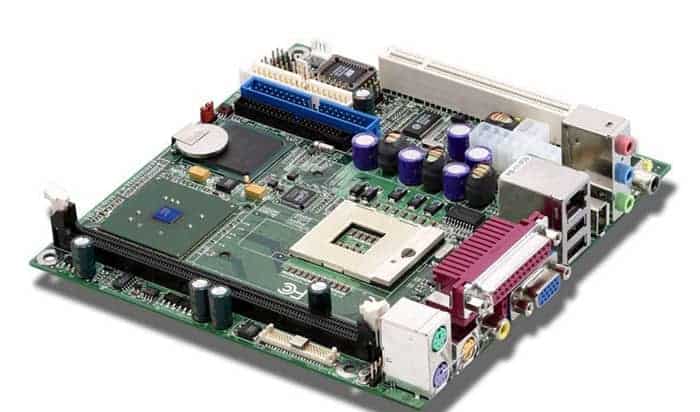Introduction
Contract electronic assembly refers to the process of outsourcing the assembly of electronic components and products to a third-party manufacturer. Companies in industries like consumer electronics, telecommunications, automotive, aerospace, and medical devices often use contract assemblers to assemble circuit boards, wire harnesses, and other electronic subassemblies and final products.
There are many benefits to utilizing contract electronic assembly versus in-house assembly. Contract manufacturers have expertise in assembly processes, use the latest automated equipment, and can leverage economies of scale to offer competitive pricing. This allows companies to focus on design and innovation while reducing their overhead costs.
However, effectively managing the relationship with a contract assembler requires understanding the ins and outs of the whole process. This comprehensive guide will examine contract electronic assembly in detail, including topics like:
Key considerations when outsourcing assembly
- Cost analysis and pricing models
- Quality systems and standards
- Logistics and supply chain factors
- Protecting intellectual property
- Managing data and documentation
The assembly process step-by-step
- Design for Manufacturing (DFM)
- Prototyping and new product introduction
- Sourcing components and materials
- Programming and tooling up
- Printed circuit board assembly (PCBA)
- Box build and final assembly
- Testing, inspection, and quality checks
Maintaining a successful contract assembly relationship
- Contracts and business agreements
- Communication and project management
- Process controls and continuous improvement
- Compliance, audits, and corrective actions
- Managing inventory, forecasts, and material planning
This guide will provide readers with a comprehensive overview of contract electronic assembly, including practical insights and advice for managing high-quality, low-cost production with a contract manufacturer.
Key Considerations When Outsourcing Assembly

For original equipment manufacturers (OEMs), outsourcing production to an electronics manufacturing services (EMS) provider or contract assembler offers many benefits. However, there are also important factors to consider when deciding whether or not to outsource and selecting the right contract assembly partner.
Cost Analysis and Pricing Models
One of the biggest considerations is cost. Contract manufactures are able to achieve lower costs through economies of scale and specialization in assembly processes. However, OEMs need to conduct a thorough cost analysis when deciding between in-house vs. outsourced assembly.
Some factors that impact cost include:
- Labor rates – Lower labor rates are available overseas, but this must be balanced with quality and IP risks.
- Purchasing power – Component distributors offer discounts for bulk purchases.
- Manufacturing overhead – This includes maintenance, utilities, compliance costs.
- Logistics – Shipping and customs costs need to be factored in.
In terms of pricing models, contract assemblers typically offer:
- Turnkey – A fixed price per unit based on expected volumes. Price includes materials.
- Consigned – OEM supplies materials, CM charges only for labor and overhead.
- Time and materials – OEM is billed for actual labor time and materials used.
Quality Systems and Standards
Ensuring quality is a major concern when outsourcing production. Contract assemblers should have quality certifications such as ISO 9001, IATF 16949 (automotive), or AS9100 (aerospace).
Beyond certifications, OEMs need visibility into process controls, corrective actions, traceability, inspection data, qualifications, and continuous improvement initiatives.
Logistics and Supply Chain Factors
Since contract assembly means manufacturing is remote from engineering and management, logistics and supply chain factors must be evaluated. Consider things like:
- Lead times for shipping work in process (WIP) and finished goods.
- Customs requirements if manufacturing is overseas.
- Warehouse space required for inventory.
- Demand volatility and flexibility to respond.
Careful supply chain planning is key to avoiding delays, shortages/overflows, and extra costs.
Protecting Intellectual Property
Intellectual property protection is crucial when outsourcing manufacturing. OEMs should use NDA agreements and limit access to sensitive design files. Work with assemblers experienced in safeguarding customer IP and data.
Additional IP protection tips:
- Encrypt files, require two-factor access.
- Clearly specify ownership of IP.
- Limit plant tours and photography.
- Segregate different customers within plant.
Managing Data and Documentation
With outsourced manufacturing, responsibilities for generating and managing data must be clearly delineated. Types of data to manage include:
BOMs & Engineering Docs – Latest approved revisions need to be accessible.
ECOs & NPI Info – Engineering change documentation is critical.
Process Data – Valuable records like test results and SPC/SQC metrics.
Determine systems and permissions for accessing data. Ensure traceability is maintained through processes.
The Assembly Process Step-By-Step
The electronics assembly process typically involves multiple stages, some performed internally and some by the contract assembler. Here is an overview of a typical contract assembly workflow:
Design for Manufacturing (DFM)
DFM means optimizing the product design for production. DFM guidelines help:
- Standardize components for availability and cost.
- Reduce part counts and hand assembly steps.
- Eliminate fragile or hard to assemble parts.
- Allow for automated inspection and testing.
Contract assemblers can provide DFM feedback early in the design process, before tooling investment is made.
Prototyping and New Product Introduction
Prototyping with a contract assembler allows validating manufacturability before full ramp up. Issues found during NPI can influence final design tweaks.
Use low-volume NPI runs to confirm:
- BOM & assembly documentation accuracy
- Process programming
- Operator training requirements
- Quality benchmarks
- Production time studies
NPI is the critical phase for uncovering potential problems and risk reduction.
Sourcing Components and Materials
The contract assembler sources most or all required materials for production. Engineering will provide an approved vendor list (AVL) and bill of materials (BOM).
Contractors leverage their large purchasing power to obtain competitive pricing on components. They manage procurement logistics and inventory.
Some OEMs consign expensive or proprietary items to the assembler. This shifts responsibility back to the OEM for costs and availability of those items.
Programming and Tooling Up
This step involves taking process documentation and programming the equipment or tools that will execute assembly steps:
- SMT machines – Programmed with x/y coordinates for accurate component placement.
- Wave solder – Programming conveys board path, angle, speed.
- Test fixtures – Fixtures are designed to connect properly and perform tests.
- PCB tooling panels – Tools hold boards in place for population steps.
Debugging the programming is critical prior to full production.
Printed Circuit Board Assembly (PCBA)

PCBA is the core of electronics assembly. This is where components get soldered onto PCBs. Major steps include:
Solder Paste Screen Printing – Solder paste is applied through stencils onto pads.
Surface Mount Assembly – Components placed by pick and place machines.
Reflow Soldering – Solder paste reflowed in ovens to attach components.
In-Circuit Test – ICT fixture confirms proper assembly before further build up.
Conformal Coating – Protective coating applied to PCB if required.
Through-Hole Assembly – Leaded components, connectors mounted to boards.
Wave Soldering – Bottom side soldering of through hole parts.
Manual Touch Up – Any rework, repairs, or hand assembly done.
Cleaning – Remove flux residues from PCBs.
Box Build and Final Assembly
For products with enclosures, box build is the next stage. This involves:
- Installing PCBs into cases using fasteners or adhesive.
- Mounting additional parts like pumps, motors, sensors.
- Interconnecting PCBs via cabling and wiring harnesses.
- Assembling complex modules and subassemblies.
Box build may require fixturing solutions to ease positioning and access during assembly.
Testing, Inspection, and Quality Checks
Testing and inspection occurs throughout the assembly process:
- In-circuit testers check PCB assembly.
- Flying probe testers do bed-of-nails PCB test.
- Functional testers exercise subsystem electronics.
- Optical and x-ray inspection look for defects.
- Sample destructive teardowns verify assembly integrity.
- Audits verify process adherence and documentation.
Data from all testing, inspection, and auditing should be shared with the OEM. This allows monitoring quality and supporting continuous improvement initiatives.
Maintaining a Successful Contract Assembly Relationship
The key to realizing the benefits of contract manufacturing is maintaining a productive, transparent working relationship between OEM and assembler. Here are some best practices:
Contracts and Business Agreements
Formal contracts establish terms, pricing, and legal protections for IP, data, and liability. Main contract components typically cover:
- Statements of work with clearly defined responsibilities
- Quality expectations and compliance requirements
- Forecasting, ordering, and inventory management
- Change management for BOMs, processes, testing
- Payment terms and pricing structure
- Warranty coverage and RMA handling
- Regulatory and certification needs
- Confidentiality and IP
Communication and Project Management
With distributed teams, constant communication and project management discipline are essential for success. Best practices include:
- Documented processes for intercompany data exchange and change orders
- Regular status meetings to discuss open issues and KPIs
- Visibility into WIP monitoring and inventory levels
- Relationship building between engineering and quality teams
- Clear escalation paths when issues arise
Process Controls and Continuous Improvement
OEMs must gain visibility into the assembler’s production controls and processes. This allows monitoring quality and supporting continuous improvement.
Ask about their procedures for:
- Process FMEA, control plans, work instructions
- Operator training and certification
- Corrective/preventive actions (CAPA)
- Statistical process control and data tracking
- Handling of non-conforming material (NCM)
- ECO change management
Compliance, Audits, and Corrective Actions
Ongoing compliance is verified through audits and assessments. These may include:
- ISO or industry standard audits
- Supplier scorecards rating performance KPIs
- Site visits to inspect facilities and processes
- Source inspection of finished goods
When issues arise, the contract assembler must quickly implement containment actions and permanent corrective actions (PCA). Root cause analysis is key, along with error proofing to prevent recurrence.
Managing Inventory, Forecasts, and Material Planning
Since the contract assembler procures materials, good forecasts are essential to proper inventory management. OEMs should provide:
- Rolling 12 month forecast, updated monthly
- Firm 6 week backlog visibility
- Long lead time items flagged in BOM
- End of life and last time buy notices
The assembler can provide inventory reporting and lead time tracking to identify risks requiring mitigation.
Frequently Asked Questions
What are the typical pricing models offered by contract electronic assemblers?
Contract assemblers offer several pricing models to meet customer needs:
- Turnkey pricing – Fixed price per unit including all materials.
- Consigned pricing – Customer supplies materials, CM charges for labor/overhead.
- Time and materials – Customer is billed for actual assembly time and materials used.
Turnkey pricing provides maximum predictability but less control. Consigned and T&M offer more flexibility for the customer.
How can I protect my intellectual property when outsourcing manufacturing?
- Use non-disclosure agreements and limit data access.
- Encrypt electronic files and design data.
- Clearly specify ownership of IP and prohibit unauthorized sharing.
- Limit plant tours and photography to only essential personnel.
- Request dedicated space and segregation from other clients.
- Audit contractor security and policies frequently.
What process documentation is required when outsourcing electronics assembly?
Typical documents required are:
- BOM – Approved bill of materials listing all parts.
- AVL – Approved vendor list for sourcing parts.
- Mechanical drawings – Enclosure dimensions and details.
- Schematics and PCB layout files.
- Assembly drawings – Instructions for complex builds.
- Test specifications – For function, quality inspections.
- Work instructions – Detailed process steps.
Maintaining revision control and access permissions for documentation is critical.
How can I monitor outsourced assembly quality?
- Require statistical reporting on yields, defects, test results
- Perform source inspection of finished goods
- Conduct site audits and process reviews
- Review corrective/preventive actions for problems
- Scorecard contractor performance with KPIs
- Implement continuous improvement projects
What is the typical lead time for contract assembly of a new product?
Typical lead time from releasing a new product to full production is 12-16 weeks:
- 2-4 weeks for sourcing long lead items
- 2-3 weeks for programming machines
- 3-4 weeks builds for prototyping and NPI
- 1-2 weeks to incorporate any changes
- 4-6 weeks for full ramp up after processes are approved
NPI lead time can often be compressed significantly for quick market response.



0 Comments